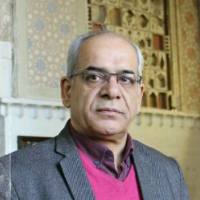Periodization in the Works of the Historians of Iranian Architecture
Author(s):
Article Type:
Research/Original Article (دارای رتبه معتبر)
Abstract:
Anything deemed as an object of historical study goes through changes with the passage of time. What historians do is partly to explain such changes, and periodization is a conceptual tool devised for this purpose. Periodization both reveals the historians’ position regarding the changes they perceive and the origins and results they assign to them, and shows how they understand their subject matter. In this paper, we have reviewed the body of the Iranian architectural historiography to determine how historians have used periodization to explain the formation of Iranian architecture; how their understanding of “architecture” and “Iranian architecture” affected the periodization they have used; and what consequences such periodization have on the historiography of Iranian architecture. This study reveals that the architectural histories have mainly borrowed from the periods already established in the field of the political history of Iran. The periodization reflect the major ruling dynasties in consecutive eras, and architectural historians have associated the works of architecture with their contemporary political context to the point that they have considered the state as the main force behind any significant change in architecture. Adopting the political criteria of periodization has lent historians a useful framework, but its dominance have made them oblivious to the possibility of alternative histories that could include more diverse works of architecture and offer different explanations. Architecture is a vast concept and historians of Iranian architecture have relied upon different definitions of it, such as a fine art, the embodiment of culture, the symbol of civilization, and the reflection of a nation’s spirit. These definitions have helped them to identify the periods of time in which apposite examples have emerged in the Iranian architecture. These periods are mostly similar in different historiographies; however, they cannot agree on periods earlier than Median and Achaemenid to mark the beginnings of Iranian architecture. They have also distinguished the works of architecture as “Iranian” by acknowledging specific properties in them; among which “continuity”, “monumentality”, “historical value”, and “aesthetic value” are recurrent themes. The idea of continuity has an important role in determining whether or not the more recent architectures, such as Qajar architecture could be considered a period of the historical architecture of Iran. The contemporary architecture has been also shaped around the idea of a period of discontinuity in otherwise continuous Iranian architecture. Current forms of periodization impose some limitations on how we understand the history of Iranian architecture. The cliché of 2500 years of Persian civilization, that has found its way into many architectural histories through the works of orientalists, leaves out long periods of our past as irrelevant or negligible. The political criteria of this periodization advocates the state as the main power that shapes architecture, thus historians tend to focus on the monuments, not the mundane, residential or rural architecture. It also prevents them from studying the works of architecture located in areas that are peripheral to a specific dynasty’s realm.
Keywords:
Language:
Persian
Published:
Journal of Architecture and Urban Planning, Volume:12 Issue: 26, 2020
Pages:
83 to 96
magiran.com/p2165023
دانلود و مطالعه متن این مقاله با یکی از روشهای زیر امکان پذیر است:
اشتراک شخصی
با عضویت و پرداخت آنلاین حق اشتراک یکساله به مبلغ 1,390,000ريال میتوانید 70 عنوان مطلب دانلود کنید!
اشتراک سازمانی
به کتابخانه دانشگاه یا محل کار خود پیشنهاد کنید تا اشتراک سازمانی این پایگاه را برای دسترسی نامحدود همه کاربران به متن مطالب تهیه نمایند!
توجه!
- حق عضویت دریافتی صرف حمایت از نشریات عضو و نگهداری، تکمیل و توسعه مگیران میشود.
- پرداخت حق اشتراک و دانلود مقالات اجازه بازنشر آن در سایر رسانههای چاپی و دیجیتال را به کاربر نمیدهد.
In order to view content subscription is required
Personal subscription
Subscribe magiran.com for 70 € euros via PayPal and download 70 articles during a year.
Organization subscription
Please contact us to subscribe your university or library for unlimited access!



